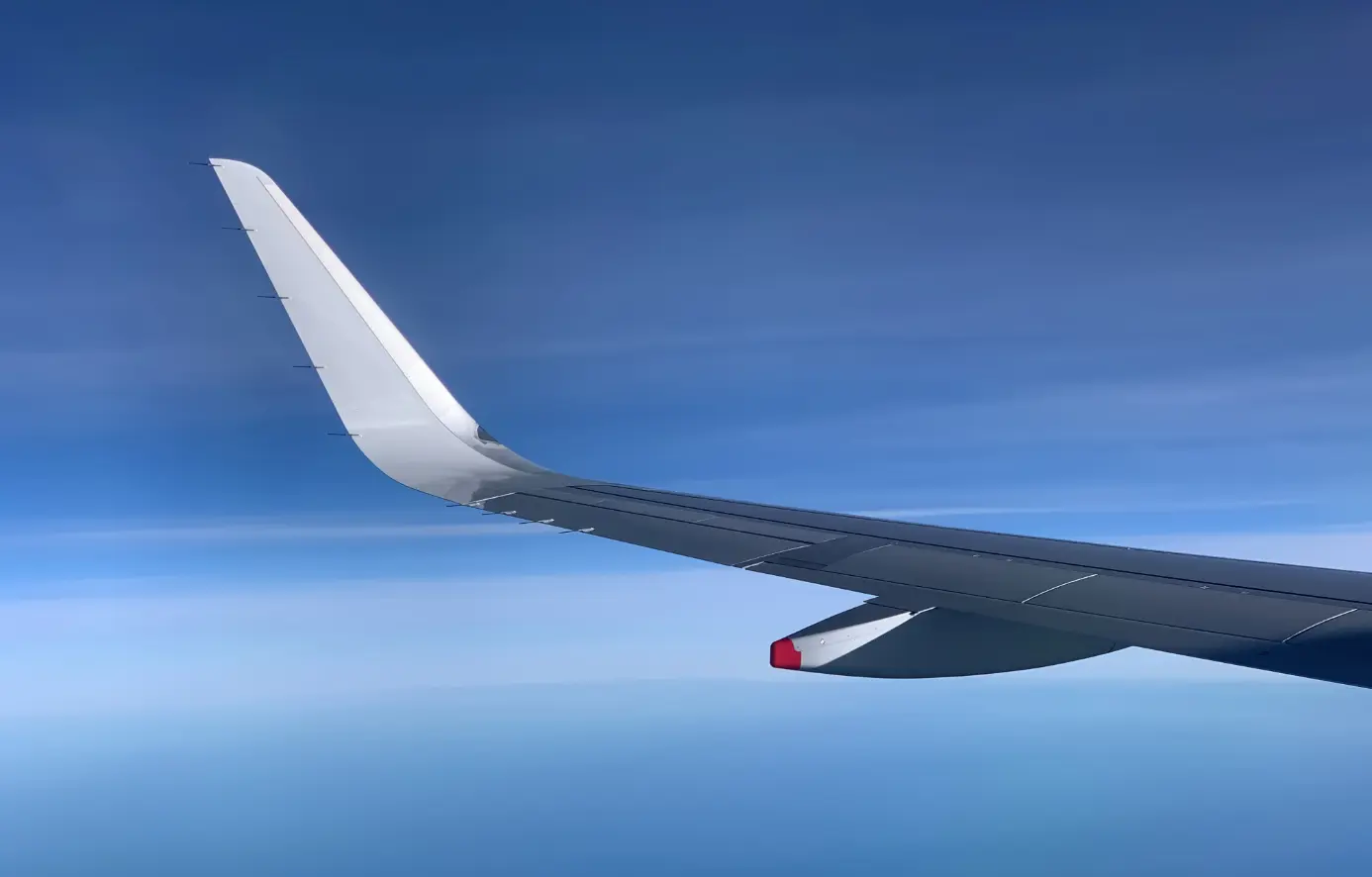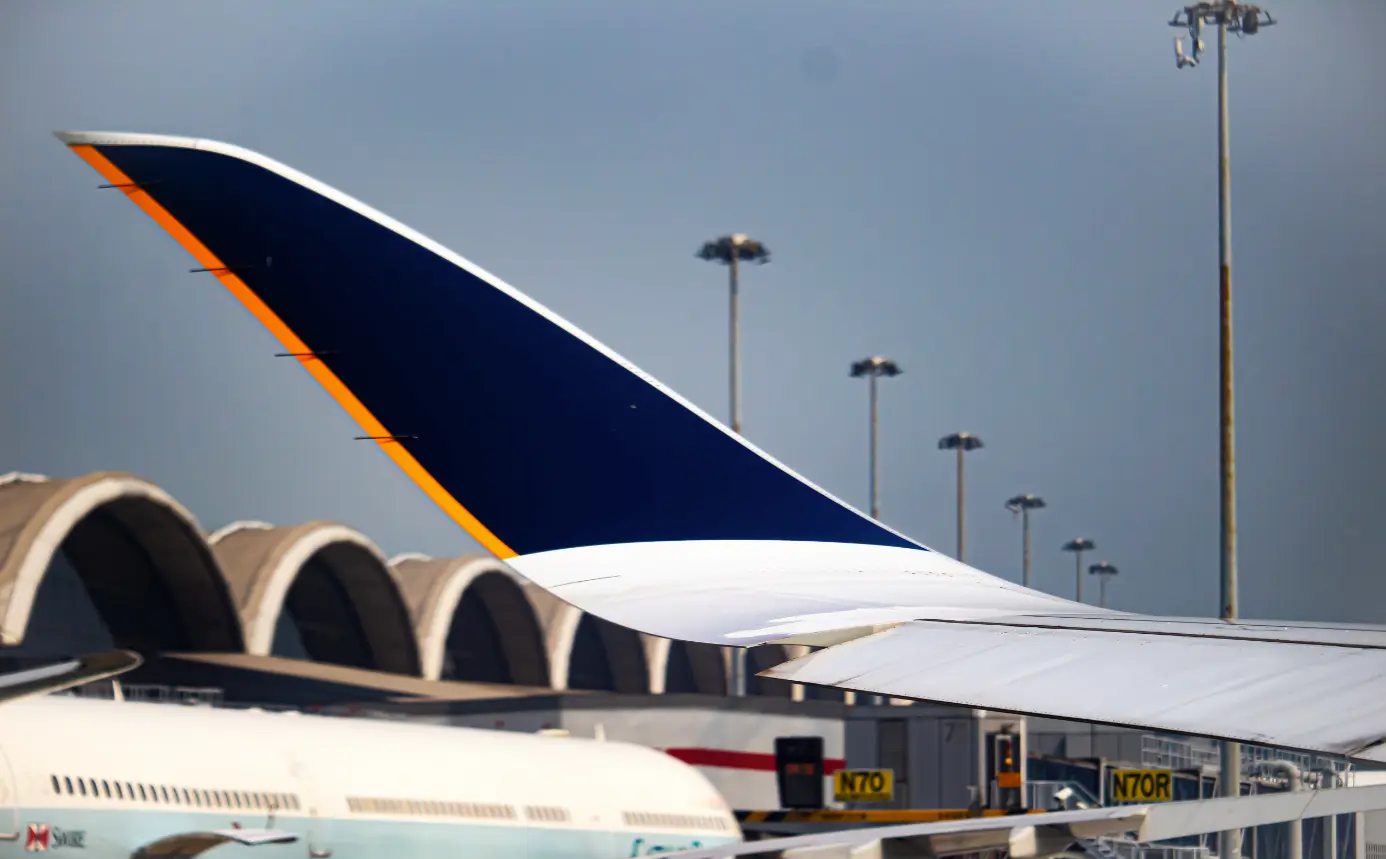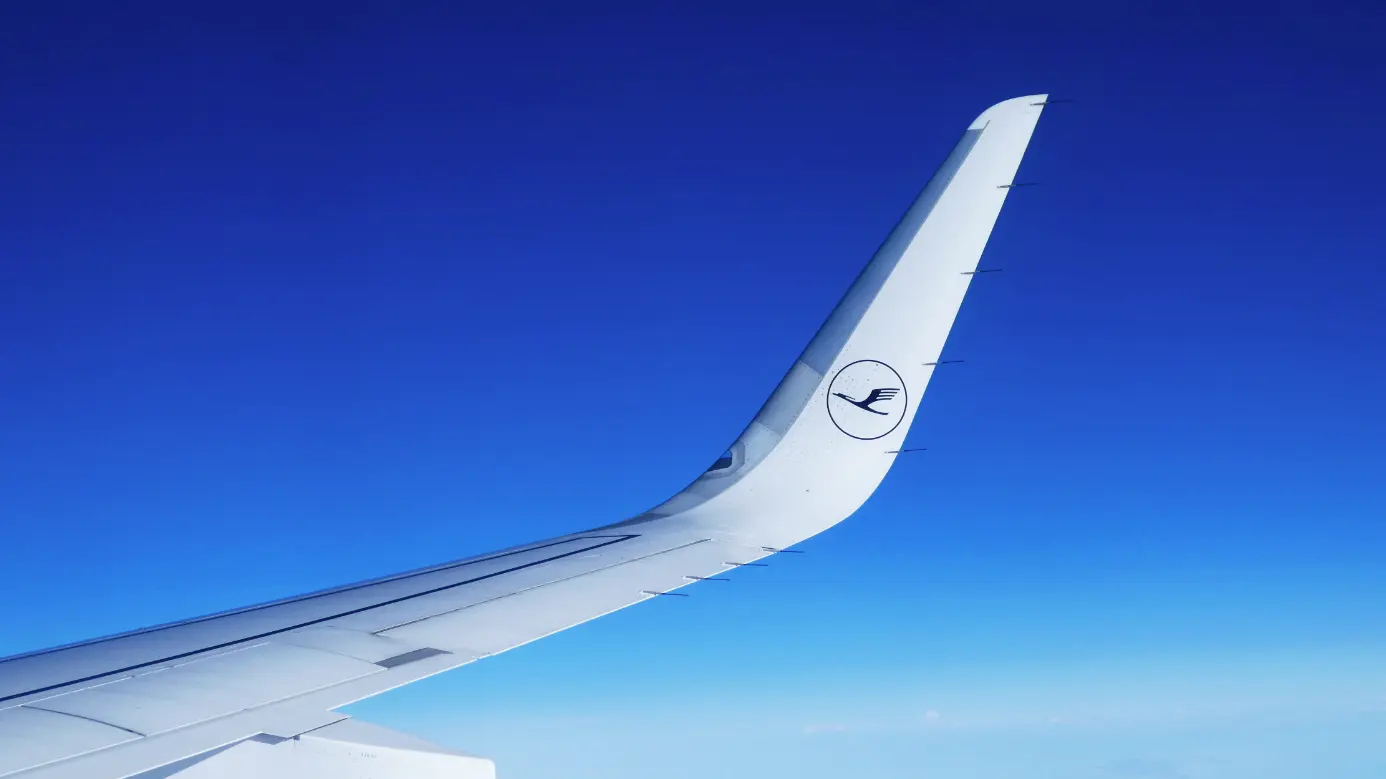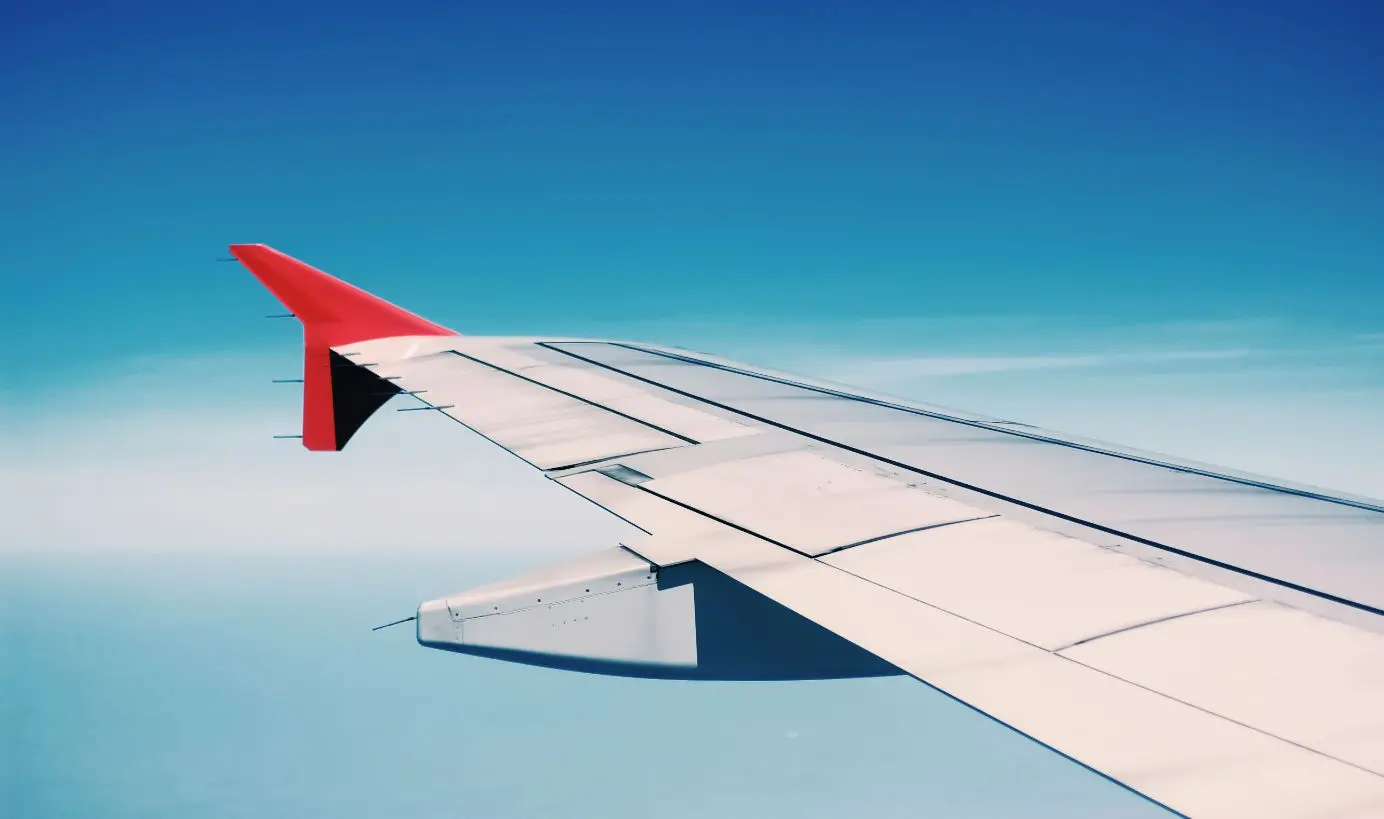
Winglets on Aircraft: Everything You Need To Know
Discover what winglets are, their benefits to aircraft, and why not all new planes have them.
Table of Contents
The term "winglets" refers to the devices that engineers attach to the end part of a plane's wings to reduce fuel consumption and increase the overall efficiency of the aircraft. The idea has been around since the late 1800s, and today, many modern aircraft utilize this popular technology.
Continue reading to discover why aircraft have winglets and the range of benefits that these devices provide. Learn the brief history of the winglet and why (despite their numerous benefits) not all new planes install these energy-saving devices.
What Are The Winglets On Aircraft?
Winglets are the devices attached to the tip of an airplane's wings. The winglets on an aircraft provide a vertical extension of the wing tip that helps increase the cruising range of the aircraft and its fuel efficiency.
There are a variety of winglets that function in several different ways. Still, the primary function of each is to increase the aircraft's operational efficiency by reducing drag. They do this by reducing the strength of wingtip "vortices."
Winglets on aircraft can also improve handling characteristics while improving aircraft safety. In addition, winglets increase the wing's aspect ratio without significantly increasing the wingspan. If you were to instead, increase the wingspan, you would experience a lower amount of lift-induced drag but an increase in parasitic drag, meaning the strength and weight of the wing would need a boost. An increased wingspan also causes problems at gates in some airports.
And at some point, the net benefit of increased wingspan is outweighed by these factors.

What Is The Purpose Of Aircraft Winglets?
In the 1970s, fuel prices began to climb, forcing companies to find new ways to increase the energy efficiency of their aircraft. During this time (and ever since), engineers have examined numerous ways in which various technologies could provide a more efficient operation over a range of aircraft.
One device that emerged during the time and remained among aviation's leading fuel-saving devices is the winglet.
Winglets work by decreasing the amount of drag created at the tip of an aircraft's wings. The shape of an aircraft's wings helps to generate higher pressure under the wing than over the wing, creating the lift needed to fly. The unequal pressure balance enables the aircraft to lift from the ground and glide through the sky.
But, this unequal pressure has its drawbacks. One of these is that it forces air from under the wing to travel over the wingtip, continuing its way across the upper wing surface where it causes a "wingtip vortex" - a sort of mini whirlwind at the tip. This vortex increases drag and reduce lift, resulting in lower efficiency and increased fuel cost.
This is where wingtips come in. They operate similarly to a sailboat traveling upwind, producing thrust inside the vortices circulation, thereby reducing their strength. Weakening the vortices decreases drag around the wingtips and improves the airplane's overall efficiency.
In addition, the winglet can convert some of this otherwise wasted energy from the vortex into thrust. This process may only generate a small amount of thrust, but over the aircraft's lifetime, it can add up to a significant amount, so its installation is often worthwhile.
Another essential benefit of winglets is that they can lower the aircraft's overall noise output by up to 6%. As jet noise can be a big problem for people living close to airports, lower noise levels are always welcome.

What Was The First Aircraft To Have Winglets?
The concept of winglets originated a long time before their modern implementation. In the late 1800s, a British aerodynamicist first came up with the idea when Frederick W. Lanchester patented the wing end-plate for controlling wingtip vortices. And in 1910, Scottish engineer, William E Somerville, gained a patent for the first functional winglet, which he installed on early monoplane and biplane designs.
At the end of WWII, Dr. Sighard F. Hoerner called for wing tips to direct the air from the wingtip vortices away from the surface of the upper wing surface. Even today, many of these dropped wingtips are named "Hoerner tips" in his honor.
Still, this device didn't gain international traction and implementation until Dr. Richard Whitcomb picked it up in the 1970s.
The reason for the renewed interest was that aviation fuel prices were rising, and companies needed ways to reduce costs and increase fuel efficiency. Dr. Whitcomb took the initial concept of the 1800s winglets and refined it using computer studies and wind tunnel tests. His research concluded that introducing winglets could increase an aircraft's efficiency by 6% to 9%.
A test program at NASA between 1979-80 validated Dr. Whitcomb's theory when a military version of Boeing's 707 recorded a fuel mileage that had increased by 6.5% thanks to the winglets.
Why Don't All New Planes Have Winglets?
Winglets are common across several jetliners and can reach up to six feet.
As an integral element of aircraft design, the winglets are designed with just as much care and attention as the wings themselves. But the efficiency of the winglets depends on many other factors, too, including:
- The overall design of the aircraft
- The efficiency of the engines
- The weather at the time of the aircraft operation
Generally, winglets across the aviation industry are responsible for an increased efficiency rate of around 7%. Still, there are several different kinds of winglets whose size and design depend on the aircraft they're attached to.
With the plethora of benefits, you may be surprised to hear that not all new planes have installed winglets. There are, however, a few key reasons for this.
Firstly, winglets are most commonly found on large planes with long wings, wings that are necessary to generate the amount of lift that large aircraft needs. However, long wings take up more space, making it more challenging to maneuver the plane on the ground. Generally, many smaller planes have smaller wings.
On these small aircraft, the benefit of the winglets is outweighed by the drag penalty from the excess weight. This is one of the key reasons why not all new planes have winglets.
Some planes, such as the Boeing 787, don't have winglets installed but rather an updated "raked wingtip." A raked wingtip refers to the triangular shape of the jet wing's end. This shape gives them a greater sweeping angle than the remainder of the wing.

This design has a similar effect as a conventional winglet, but they don't add any weight as they don't require adding other components. Research conducted by Boeing and NASA found that this new design offers a more significant overall reduction in drag than a traditional winglet would.
Because of this, the Boeing 787 has efficient enough wings without traditional winglets. This is another reason some new planes (even large ones) do not have winglets.
Final Thoughts
Winglets are an excellent device for combating the wing vortices of an aircraft. They work to reduce the strength of the wind vortices at the end of the wing and fight the drag they produce on a plane.
Not only do winglets increase the aircraft's fuel efficiency, but they also tend to lower the noise made by the airplane - a great pain for people living close to airports. Winglets can span up to 6 feet high, and you'll see them on several of today's aircraft.
However, as with any design, the winglet also has negative characteristics. The main drawback is the increased weight, which can lower the overall fuel efficiency of small airliners. In addition, research shows that newer, more streamlined designs are constantly emerging and some of the latest aircraft utilize other methods instead.
Planenerd Newsletter
Join the newsletter to receive the latest updates in your inbox.






